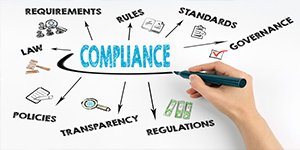Application Scenarios



Digital Sniffer Dog for Secure Document Comparison
Arvato has been working with the DocBridge® Delta test software since 2012 - and is thus able to compare documents visually as well as on the text level. Even the smallest differences can be detected, even with complex and extensive documents. Thanks to the high degree of automation, document checking at arvato is now not only more secure, but also more efficient: Employees can concentrate better on their core business.
- Approximately 7,000 documents checked daily
- Almost 100% process reliability
- Processing of all common data formats
High-performance Verification of Complex Documents with Variable Data
Data-Mail Inc. chose DocBridge® Delta for its search for a powerful tool for checking complex documents with variable data. Immediately after the introduction, the employees were able to significantly increase the processing speed of around 80 percent of the checks.
- Around 80% of the checks are carried out much faster
- 1.5 billion shipments per year
- Around 80% of the tests are carried out much faster
Automated Document Verification for Mass Production Advertising Campaigns
The increasing number of variants for personalized direct mailing campaigns in large quantities forced Naehas to look for an alternative to the previous manual checking of documents. With DocBridge® Delta, the US company succeeded in establishing an efficient, because automated, digital verification process that could also be seamlessly integrated into existing document processing.
- Several thousand different versions within one campaign
- 100% completeness and rule conformity
- At least 60 minutes time saving per test












